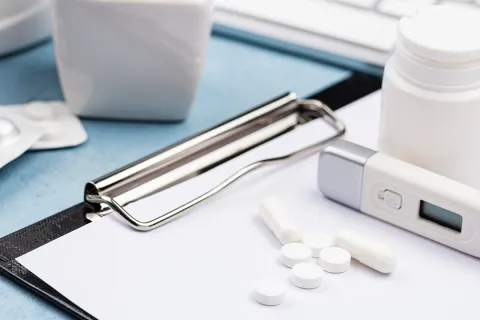
Pharmacovigilance, or drug safety monitoring, is crucial in the pharmaceutical industry to ensure drugs remain safe and effective after they reach the market. Two key reports used for this purpose are Periodic Adverse Drug Experience Reports (PADERs) and Periodic Safety Update Reports/Periodic Benefit-Risk Evaluation Reports (PSUR/PBRERs). Let's break down the differences between these reports to understand their unique roles and requirements.
Comparing PADER and PSUR/PBRER
| Feature | PADER | PSUR/PBRER |
| Scope | Specific to the United States | Used worldwide |
| Primary Objective | Detailed individual case reports | Comprehensive benefit-risk evaluation |
| Regulatory Authority | US FDA | Various global regulatory bodies |
| Guidelines | US 21 CFR 314.80 | ICH E2C R2, EMA Module VII |
| Content Complexity | Simpler (about 5 sections) | More detailed (about 20 sections) |
| Key Content | - Serious unlisted event cases - Regulatory updates | - Regulatory updates - Cumulative and interval exposure - Clinical trials overview - Signal overview - Benefit-risk assessment |
| Frequency | Quarterly for first 3 years, then annually | Every six months for first 2 years, then annually |
| Submission Timeline | - Quarterly: within 30 days of DLP - Annual: within 60 days of DLP | - Six-monthly: within 70 days of DLP - Annual/Multiyear: within 90 days of DLP |
| Product Coverage | Separate PADER for each NDA, with some exceptions | One PSUR/PBRER for different forms or uses of a product |
PADER: A Closer Look at the US FDA Requirements
Purpose and Content PADERs are required in the United States by the Food and Drug Administration (FDA). They focus on detailed reports of individual cases, especially those involving death or other serious outcomes. PADERs follow the guidelines of US 21 CFR 314.80 and include around five sections, such as case presentations of serious unlisted events and updates on regulations.
Submission Frequency and Requirements Each New Drug Application (NDA) requires its own PADER, although sometimes one PADER can cover multiple NDAs for different strengths of a drug if justified. These reports are submitted quarterly for the first three years after approval, then annually. Quarterly reports are due within 30 days of the data lock point (DLP), and annual reports are due within 60 days.
PSUR/PBRER: Global Reporting with a Focus on Benefit-Risk Evaluation
Purpose and Content PSUR/PBRERs are used worldwide and are submitted to various regulatory agencies, including those in the European Union, Japan, and Canada. They provide a thorough analysis of a drug's benefits and risks. Following the ICH E2C R2 and European Medicines Agency Module VII guidelines, these reports are more complex, with about 20 sections covering updates on regulations, cumulative and interval exposure, clinical trial summaries, signal overviews, and benefit-risk assessments.
Submission Frequency and Requirements Typically, one PSUR/PBRER is prepared for a drug, covering its different forms, dosages, or uses. For new products, these reports are submitted every six months for the first two years, then annually. Six-month reports are due within 70 days of the DLP, while annual or multiyear reports are due within 90 days.
Key Takeaways
Both PADERs and PSUR/PBRERs are essential for monitoring the safety of drugs, but they differ in scope, complexity, and regulatory requirements. PADERs focus on individual case reports and are specific to the US, while PSUR/PBRERs provide a broader benefit-risk evaluation and are used internationally.
Understanding these differences is important for pharmaceutical companies and those working in drug safety to ensure they meet the necessary regulatory requirements and maintain high standards of drug safety.
Conclusion
Whether it's a PADER or a PSUR/PBRER, the goal is the same- to protect public health by continuously monitoring the safety and effectiveness of drugs. A seasoned regulatory partner like Freyr can facilitate diligence by following the specific guidelines and requirements for each report, pharmaceutical companies can ensure they provide accurate and timely safety information to regulators and healthcare providers.









